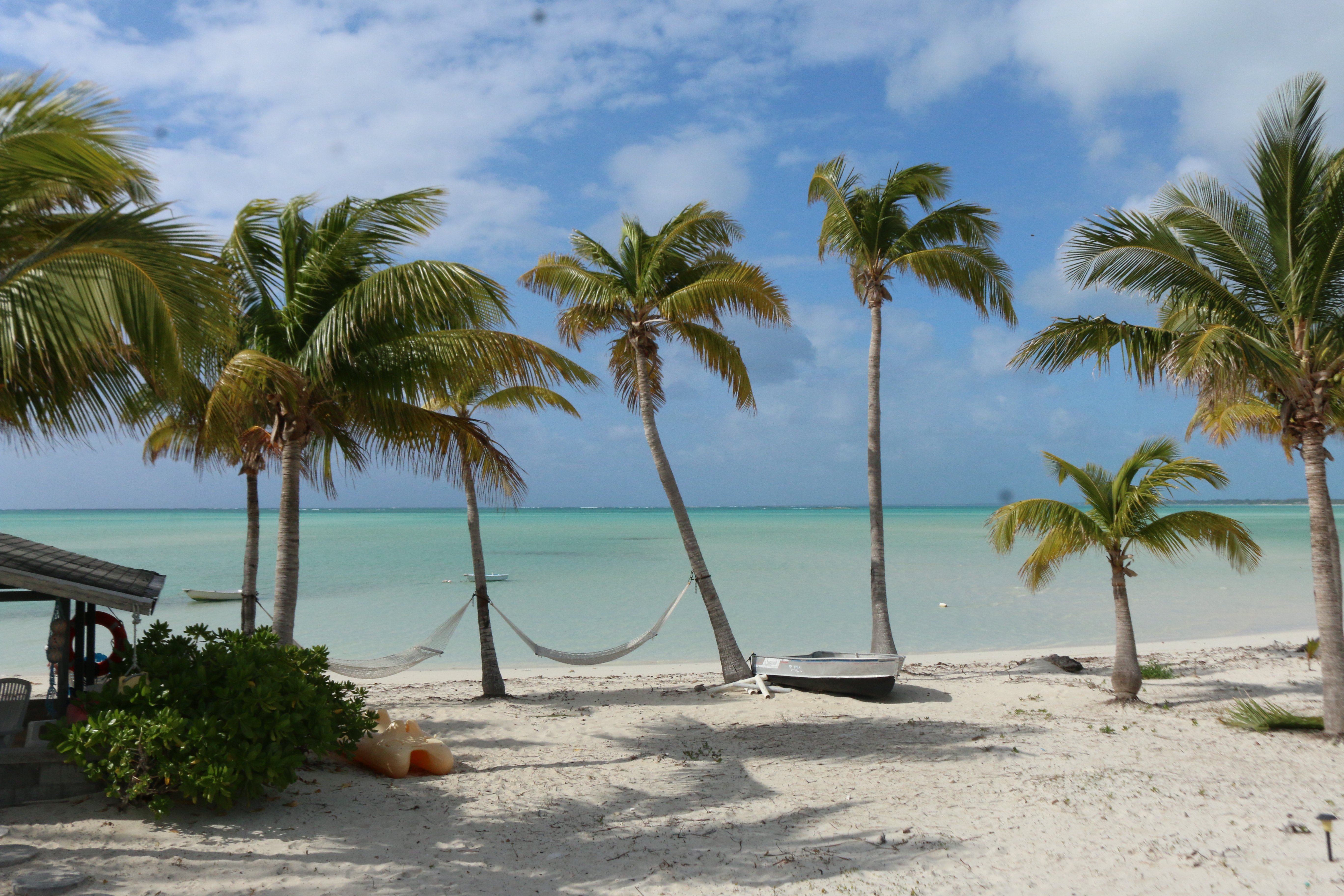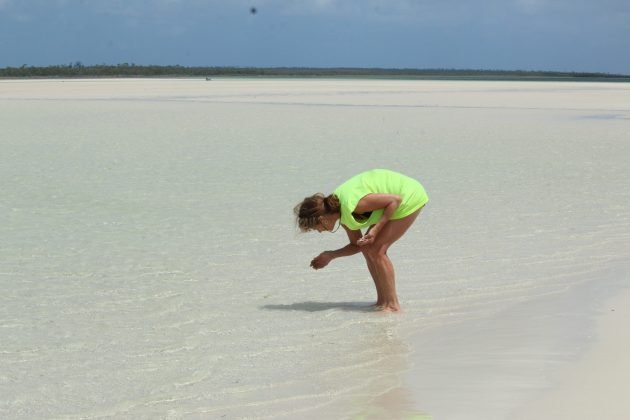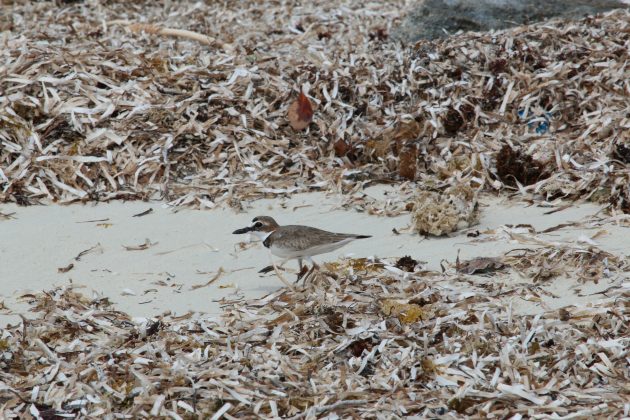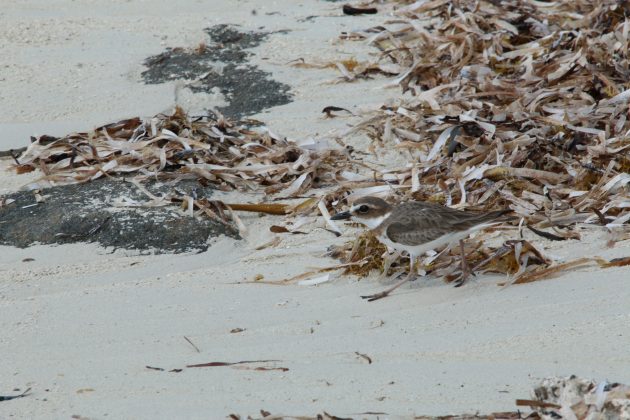
Abaco is beautiful. My family and I were staying at the edge of a sand beach, facing a wide flat in a house charmingly named “Bone Ami.” The color blue dominated the senses, changing from a deeper hue during high tide to nearly silver at the lowest ebb. The best part? The sand exposed during low tide makes for excellent walking, and even better birding.
Sure, I can see most of the birds in the Bahamas while living within Florida, but not in such stunning surroundings!

Mom looking for sand dollars.
The Abaco Islands are in the northern end of the Bahamas, covering over 700 square miles and home to around 17,000 people. The land sits atop limestone, beaches protected by the third largest barrier reef in the world. In the interior, tall pine trees shade a lower understory of bushes an ferns; on the edge of the water, mangroves dominate.
I explored the sand flats first. Small waves lapped at the edge of the exposed bar, perfect for tiny Sanderlings. They ran as fast as they could on their tiny black legs, past partially exposed sand dollars and starfish. As I walked, I noticed another group of peeps with different silhouettes, altered markings. Unlike Sanderlings, their legs were yellow, and they were distinctively a plover species. Snapping a photo, I zoomed in: Piping Plovers!
Not satisfied with a mere two species, I embarked on a later walk down the beach with my grandmother and mother (the dream birding team!). Striding slowly past beach houses and swaying pines, we made our way to a rocky outcropping indicating the entrance of a shallow lagoon. Ruddy Turnstones, morphing from winter to breeding plumage, mixed with a new shorebird.

Wilson’s Plover.
At first glance they looked a lot like the Piping Plovers, scurrying over piles of washed up seaweed and stone just high enough to avoid swamping by the tide. However, there was something different. A quick look through the binoculars revealed a wide, dark, long bill. I had only seen that distinctive feature once before, on the much darker sands of Folly Beach in South Carolina. Now, thousands of miles away, I was looking at a member of the same species, a Wilson’s Plover!

A nearly hidden Wilson’s Plover.
True, four shorebirds is hardly a smorgasbord, but their antics and lively movements were plenty entertaining as I lounged on the porch or took a quick dip in the saltwater. Besides, knowing that many of them could be on their way to the United States was half the fun!













Wow! So far as I remember, this is the first post of a Caribbean paradise that does not focus on fancy tropical birds but migrants. Sweet! Very sweet!!